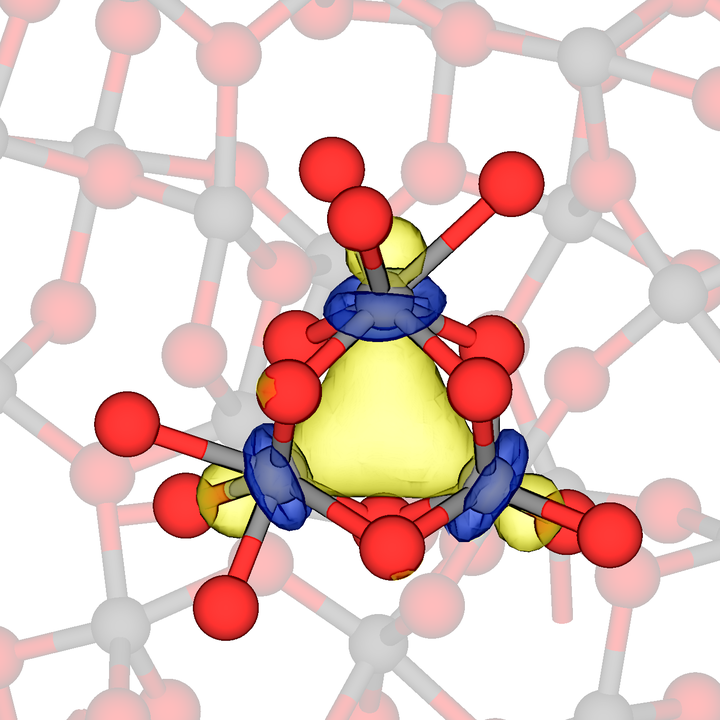
Abstract
Thin films of amorphous (a)-TiO2 are ubiquitous as photocatalysts, protective coatings, photoanodes and in memory application, where they are exposed to excess electrons and holes. We investigate trapping of excess electrons and holes in the bulk of pure amorphous titanium dioxide, a-TiO2, using hybrid density functional theory (h-DFT) calculations. Fifty 270-atom a-TiO2 structures were produced using classical molecular dynamics and their geometries fully optimised using h-DFT simulations. They have the density, distribution of atomic coordination numbers and radial pair-distribution functions in agreement with experiment. The calculated average a-TiO2 band gap is 3.25 eV with no states splitting into the band gap. Trapping of excess electrons and holes in a-TiO2 is predicted at precursor sites, such as elongated Ti-O bonds. Single electron and hole polarons have average trapping energies (ET) of -0.4 eV and -0.8 eV, respectively. We also identify several types of electron and hole bipolaron states and discuss their stability. These results can be used for understanding the mechanisms of photo-catalysis and improving the performance of electronic devices employing a-TiO2 films.